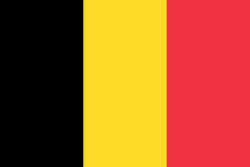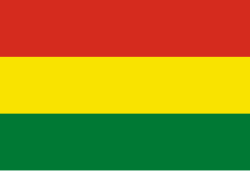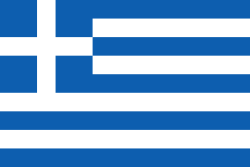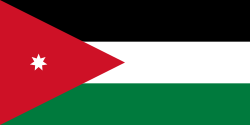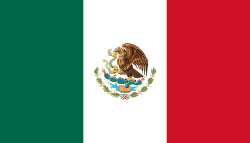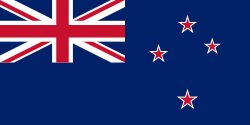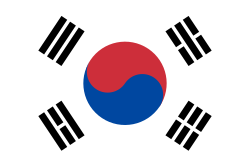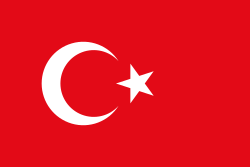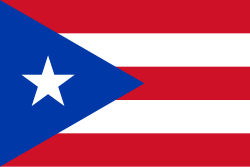Fäktning vid olympiska sommarspelen 1984
| Fäktning vid olympiska sommarspelen 1984  | ||||
|---|---|---|---|---|
| Värja | herrar | |||
| Värja, lag | herrar | |||
| Florett | herrar | damer | ||
| Florett, lag | herrar | damer | ||
| Sabel | herrar | |||
| Sabel, lag | herrar | |||

Vid olympiska sommarspelen 1984 i Los Angeles avgjordes åtta grenar i fäktning, sex för män och två för kvinnor, och tävlingarna hölls mellan 1 och 11 augusti 1984 i Long Beach Convention Center. Antalet deltagare var 262 tävlande från 38 länder.
Medaljfördelning
| Medaljfördelning | |||||
|---|---|---|---|---|---|
| Placering | Nation | Totalt | |||
| 1 | 3 | 1 | 3 | 7 | |
| 2 | 2 | 3 | 0 | 5 | |
| 3 | 2 | 2 | 3 | 7 | |
| 4 | 1 | 0 | 0 | 1 | |
| 5 | 0 | 1 | 1 | 2 | |
| 6 | 0 | 1 | 0 | 1 | |
| 7 | 0 | 0 | 1 | 1 | |
Medaljörer
Herrar
Damer
| Gren | Guld | Silver | Brons |
| Florett, individuellt | |||
| Florett, lag | Ute Kircheis-Wessel Christiane Weber Cornelia Hanisch Sabine Bischoff Zita Funkenhauser | Aurora Dan Monika Weber-Koszto Rozalia Oros Marcela Moldovan-Zsak Elisabeta Guzganu-Tufan | Laurence Modaine Pascale Trinquet-Hachin Brigitte Latrille-Gaudin Veronique Brouquier Anne Meygret |
Deltagande nationer
Totalt deltog 262 fäktare (202 män och 60 kvinnor) från 38 länder vid de olympiska spelen 1984 i Los Angeles.
|
|
|
Källor
- ”Fencing at the 1984 Los Angeles Summer Games”. Sports Reference. Arkiverad från originalet den 28 februari 2009. https://web.archive.org/web/20090228154714/http://www.sports-reference.com/olympics/summer/1984/FEN/. Läst 5 januari 2012.
- Den här artikeln är helt eller delvis baserad på material från engelskspråkiga Wikipedia, tidigare version.
Externa länkar
 Wikimedia Commons har media som rör Fäktning vid olympiska sommarspelen 1984.
Wikimedia Commons har media som rör Fäktning vid olympiska sommarspelen 1984.
| ||||||||||||||
| |||||||||||
Media som används på denna webbplats
Olympic Rings without "rims" (gaps between the rings), As used, eg. in the logos of the 2008 and 2016 Olympics. The colour scheme applied here was specified in 2023 guidelines.
Olympic Rings without "rims" (gaps between the rings), As used, eg. in the logos of the 2008 and 2016 Olympics. The colour scheme applied here was specified in 2023 guidelines.
Författare/Upphovsman: B1mbo, Licens: CC BY-SA 2.5
Drawing of a gold medal, based on Olympic rings.svg.
Författare/Upphovsman: B1mbo, Licens: CC BY-SA 2.5
Draw of a silver medal, based in Olympic rings.svg.
- The joining of the rings is not correct drawn.
Författare/Upphovsman: B1mbo, Licens: CC BY-SA 2.5
Drawing of a bronze medal, based on Olympic rings.svg.
Flag of Romania, (21 August 1965 - 22 December 1989/officialy 27 December 1989).

Construction sheet of the Flag of Romania as depicted in Decree nr. 972 from 5 November 1968.
- l = 2/3 × L
- C = 1/3 × L
- S = 2/5 × l
Flag of Romania, (21 August 1965 - 22 December 1989/officialy 27 December 1989).

Construction sheet of the Flag of Romania as depicted in Decree nr. 972 from 5 November 1968.
- l = 2/3 × L
- C = 1/3 × L
- S = 2/5 × l
The civil ensign and flag of Belgium. It is identical to Image:Flag of Belgium.svg except that it has a 2:3 ratio, instead of 13:15.
| Bolivias flagga* | |
|---|---|
| country | Template:I18n/Republic of Bolivia |
| används av | Bolivia |
| från | 1851 |
| till | Present |
| skapad av | Government of Bolivia |
| format | 15:22 |
| form | rektangulär |
| färger | röd, gul, grön
flag has 3 horizontal stripes |
| andra egenskaper | A horizontal tricolor of red, yellow and green. |
Flag of Israel. Shows a Magen David (“Shield of David”) between two stripes. The Shield of David is a traditional Jewish symbol. The stripes symbolize a Jewish prayer shawl (tallit).
Chinese Taipei Olympic Flag. According to the official website of Chinese Taipei Olympic Committee, Blue Sky(circle) & White Sun(triangles) above the Olympic rings is neither the National Emblem of the Republic of China, nor the Party Emblem of Kuomintang (KMT), but a design in between, where the triangles do not extend to the edge of the blue circle, as registered at International Olympic Committee in 1981 and digitally rendered in 2013. Besides, the blue outline of the five-petaled plum blossom is broader than the red one. Moreover, the CMYK code of the blue one and the Blue Sky & White Sun is "C100-M100-Y0-K0", and different from the Olympic rings (C100-M25-Y0-K0). Note that it's the only version recognized by IOC.
Författare/Upphovsman: Gutten på Hemsen, Licens: CC0
Flag of Norway with colors from the previous version on Commons. This file is used to discuss the colors of the Norwegian flag.
Flag of Portugal, created by Columbano Bordalo Pinheiro (1857–1929), officially adopted by Portuguese government in June 30th 1911 (in use since about November 1910). Color shades matching the RGB values officially reccomended here. (PMS values should be used for direct ink or textile; CMYK for 4-color offset printing on paper; this is an image for screen display, RGB should be used.)
Pictograms of Olympic sports - Fencing. This is unofficial sample picture. Images of official Olympic pictograms for 1948 Summer Olympics and all Summer Olympics since 1964 can be found in corresponding Official Reports.
The Egyptian flag (1972-1984). Also the flag of Libya (1972-1977) and Syria (1972-1980), when the three countries formed the nominal “Federation of Arab Republics”. (For a map of the federation, see Image:Esl.PNG.)
The Arab text in the scroll held by the “Golden Hawk of Qureish” reads Arabic اتحاد الجمهوريات العربية, ittiħād al-jumhūriyyāt al-`arabiyya, i.e. the Federation (literally “Union”) of Arab Republics — in a quasi-Kufic script (in its original form, with a very ornamental letter dal د).
Flag of the Republic of Venezuela (1930-2006)














